The open road! The dream of a motorcycle like Shadow Spirit. But how did these great roads get started? Back before we were a nation, back when we were just a collection of colonies, back when the major land routes crisscrossing eastern America were Indian trails, the roadwork had begun.
During the French and Indian War two major roads were built in the Mid Atlantic Region. You’ve heard the saying, “All roads lead to Rome.” Well, during the French and Indian War all roads led to Pittsburgh (Fort Duquesne). Whoever controlled Fort Duquesne controlled the Ohio Valley. And the from its name you know who controlled it. General Braddock, a 60 year old in reasonable health, built the first road and marched to his death. General Forbes, a dying 51 year old, built the second road and marched to victory. And George Washington accompanied them both.
Today we look at General Braddock, and we won’t even get to his road. That starts in Cumberland, MD. General Braddock landed in Hampton, VA, February 20, 1755, with two regiments of British regulars. A month later they sailed up the Potomac to Alexandria, VA, where they disembarked to begin their land journey.
One regiment under Halkett marched up the Virginia side of the Potomac to Winchester. The other regiment, under Dunbar, crossed the Potomac to Georgetown, marched up the pike to Frederick, across South Mountain (Fox Gap if you remember that), then on to the Great Wagon Road crossing of the Potomac (at Williamsport) and followed that road down to Winchester. From there both regiments would march to Fort Cumberland at the confluence of Wills Creek and the Potomac.
Braddock, himself, followed the Dunbar regiment a few days later meeting them in Frederick. Once they crossed South Mountain, their paths diverged, converging again in Winchester. In this post we will follow Dunbar and Braddock, looking for signs and monuments along highways and byways that note their route.
Maryland Route 355 (Wisconsin Avenue)
Route 355 stretches from the DC line in Bethesda to Frederick. But the road continues on into DC as Wisconsin Avenue and passes right in front of the National Cathedral. That’s where we begin this journey.
Washington DC
On the grounds of the National Cathedral is a boulder with a plaque placed there in 1907 by the Society of Colonial Wars. Its purpose? The plaque states, “To Mark The Road Over Which On April 14, 1755 A Division Of The British Army Under General Braddock Marched On Its Way To Fort Duquesne”. You can see that boulder sitting on the lawn just behind KiLleR Bee.
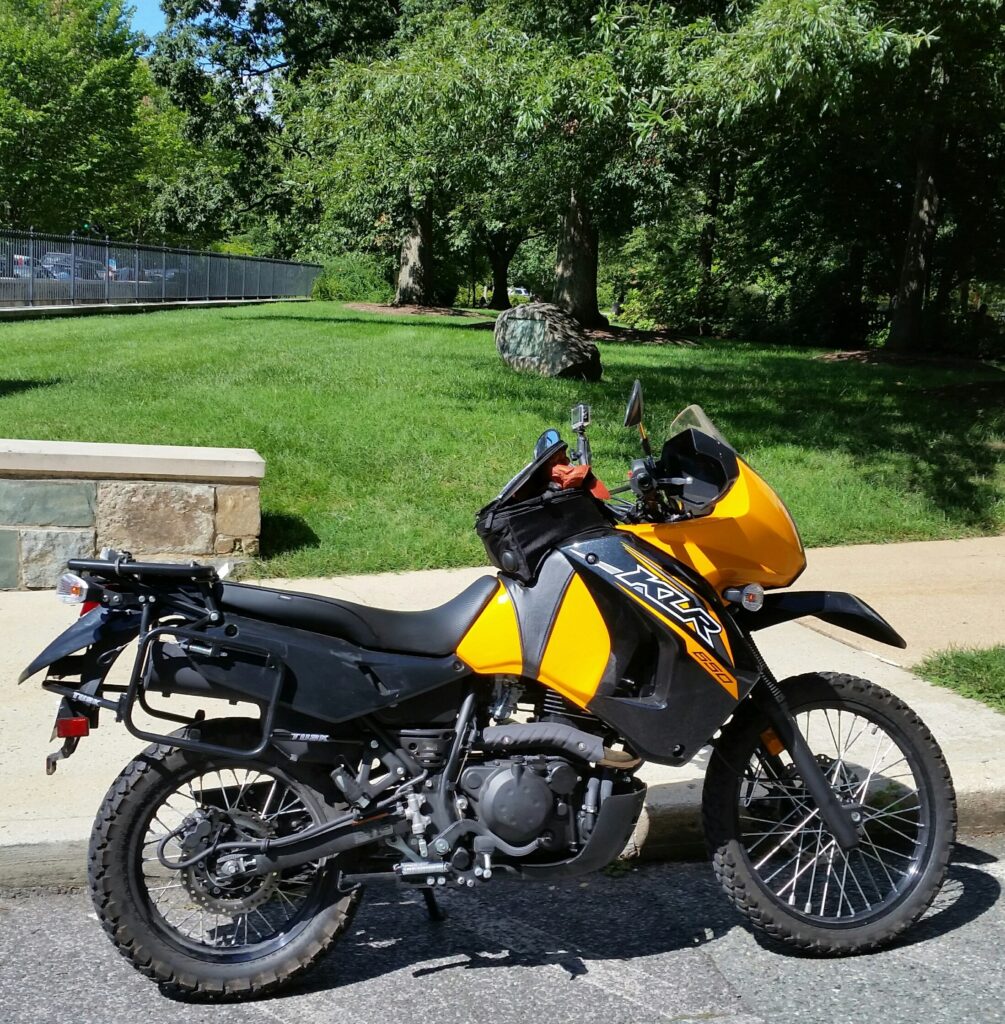
Bethesda
The minute you leave DC on Wisconsin Avenue, you are now on MD 355 in Bethesda. A mile and a half north, just before the intersection of MD 355 and MD 410, next to the Hyatt Regency, stands the Madonna of the Trail. This is one of 12 identical monuments placed by the Daughters of the American Revolution in each of the states through which the Old National Trails Highway ran. That highway was a combination of US 40 and US 66 going from Baltimore to California. These were dedicated just before the Great Depression.
Below KiLleR Bee turns off of MD 410, heading south on MD 355, stopping just before the monument.
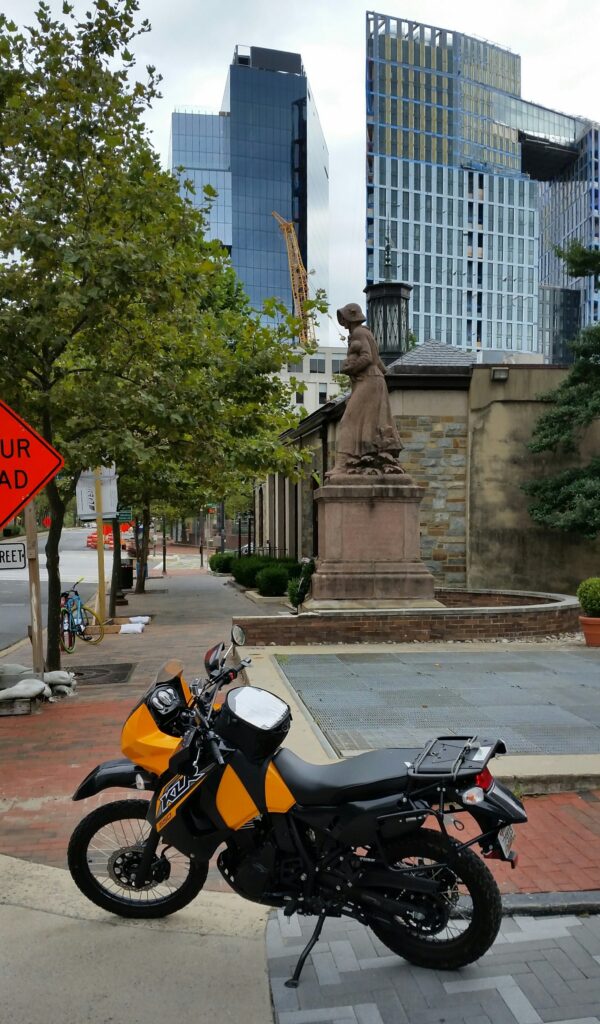
Don’t know why the monument was placed here rather than nearer US 40, but as you can see on the base it memorializes Braddock’s march along this road.
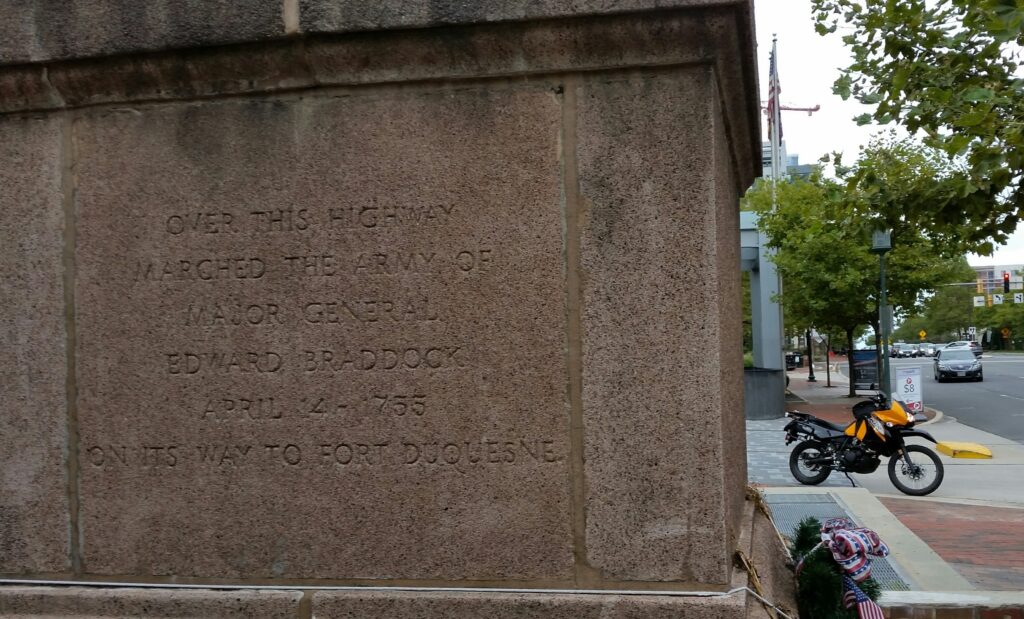
Owen’s Ordinary – Rockville
Now we come to the first of two Ordinaries. What’s an ordinary? Another name for an inn or tavern. And here is a difference between Dunbar’s march and Braddock’s ride.
Dunbar was marching a regiment of foot soldiers up the road. Officers rode horses but most of the horses were used to pull the heavy artillery or the wagons of supplies. So it took several days to get to Frederick. They would set up camp for the night at ordinaries.
Braddock, a few days later, rolled up the road in carriage drawn by six horses. Just took him a day.
Placed by the Daughters of the American Revolution, this rock and plaque commemorate Braddock’s troops staying at Owen’s Ordinary, which was the only thing in Rockville at the time. Behind KiLleR Bee you see the rock and the old historic court house. This is a few blocks off the Rockville Pike (355) where the ordinary stood.
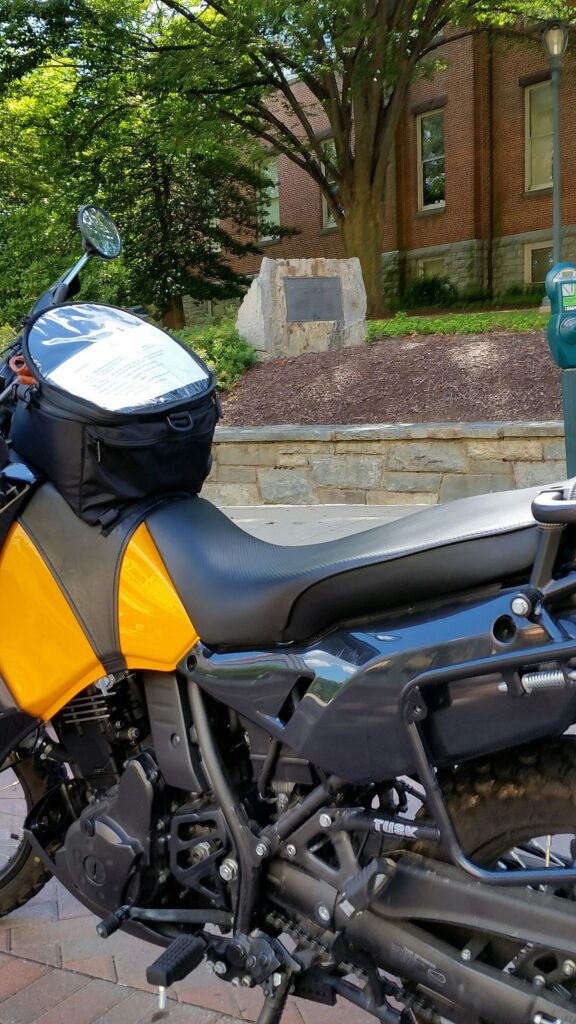
Gaithersburg
Gaithersburg remembers Braddock with a road sign in front of St Martin of Tours church. They are celebrating their 100th Anniversary. The road sign celebrates something that happened 265 years ago.
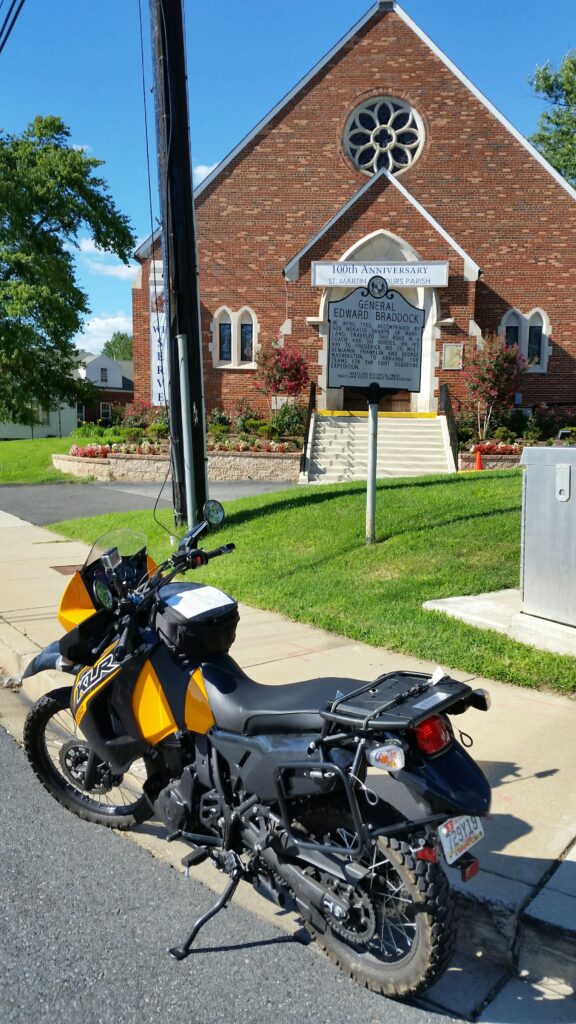
Dowden’s Ordinary – Clarksburg
Another Ordinary. Seems like an ordinary kind of day. This actually is the site of the ordinary. The Ghost Structure commemorates Dowden’s Ordinary and the fact that Braddock’s troops stopped there. On the other side of this small park, not visible from the road, is the rock and plaque placed by the Daughters of the American Revolution.
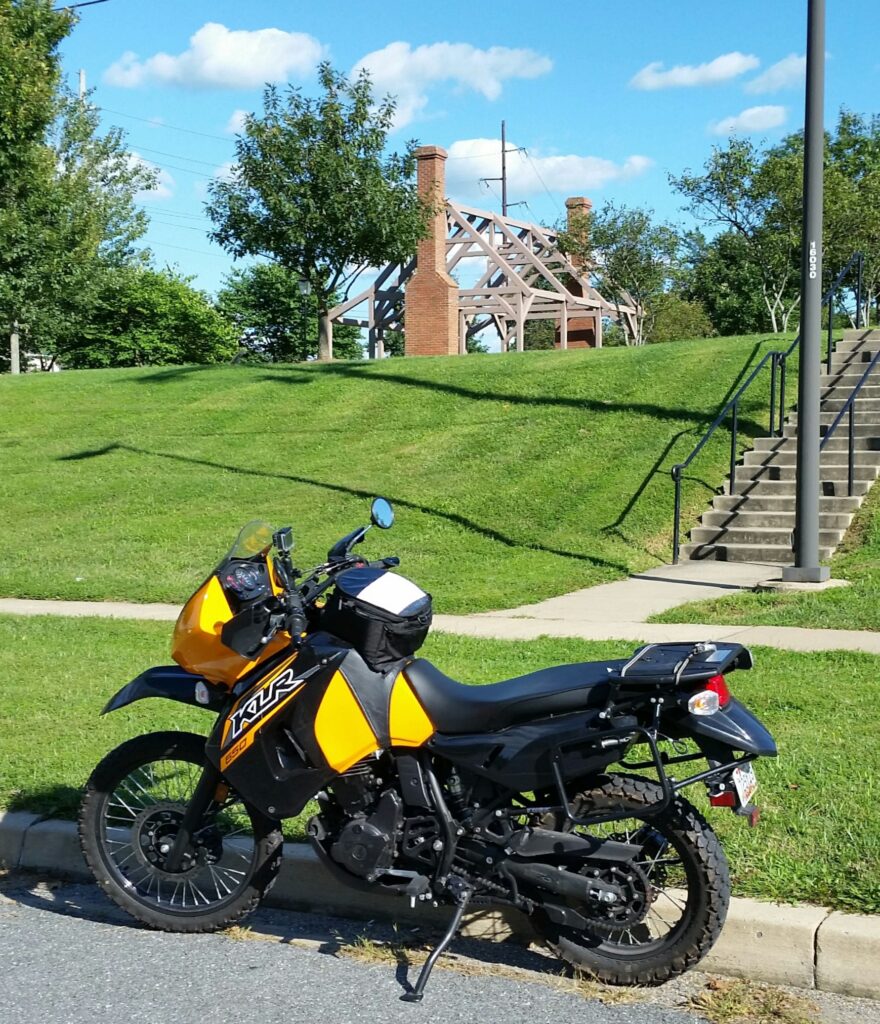
National Road – US Route 40 and 40 Alt
Frederick
Very near the site of the old tavern, the Kiwanis have placed a marker commemorating the meeting of General Braddock, the young George Washington, and Benjamin Franklin. Braddock and Dunbar diverted north through Frederick to pick up desperately needed wagons promised by Governor Sharpe of Maryland. But there were no wagons. Braddock was ready to call the whole thing off. Franklin, as postmaster, had come to arrange postal relays for the expedition. And to promote the colony of Pennsylvania. He mentioned that every farmer in his colony had horses and wagons, and, yes, he could procure some for the expedition. Problem solved!
George Washington arrived in Frederick on the last day of Braddock’s stay, to join the expedition as Braddock’s aide-de-camp. And also to provide critical knowledge of the wilderness to be crossed.
Behind the Kiwanis marker you can see KiLleR Bee.
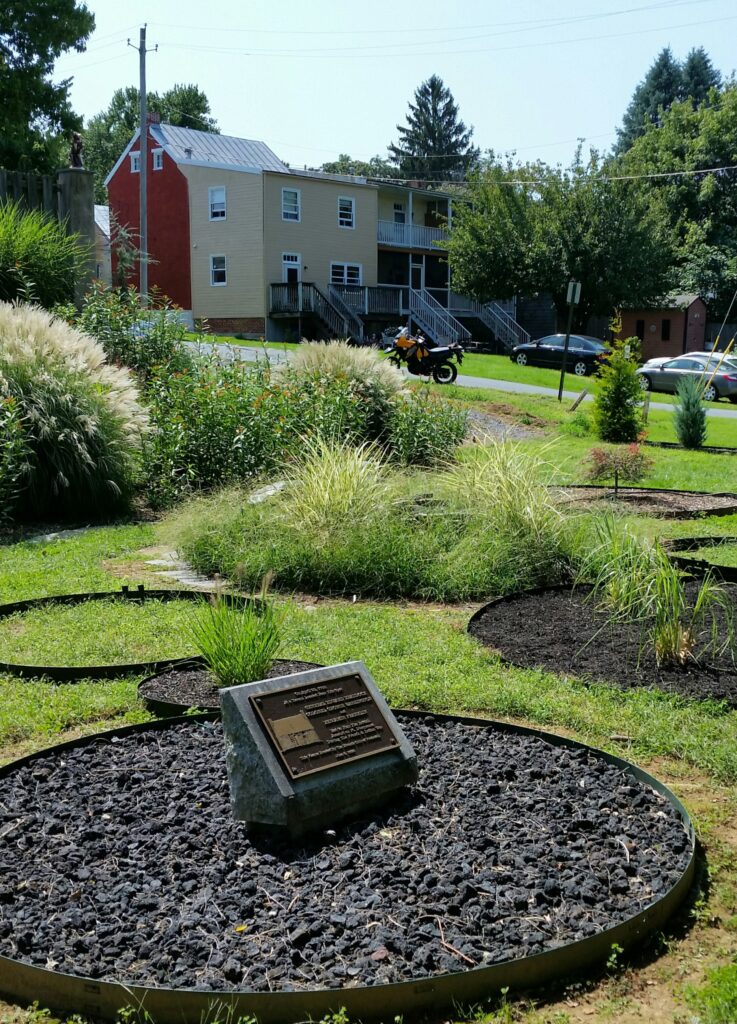
Just west of the intersection of US 40 and US 15, is another road sign remembering Braddock. KiLleR Bee is parked in the Wawa, with the sign just over the seat.
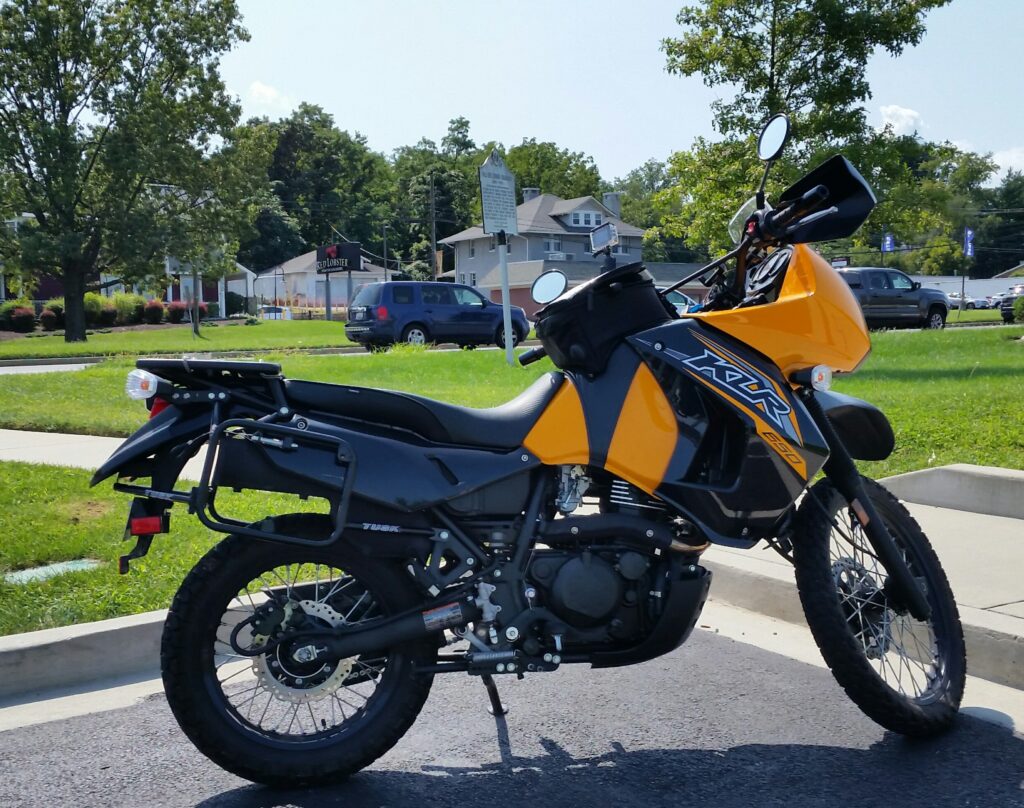
A mile or so farther on, just after the National Road branches off US 40 to follow US 40 Alt, another road sign assures you that you are following the track of Braddock
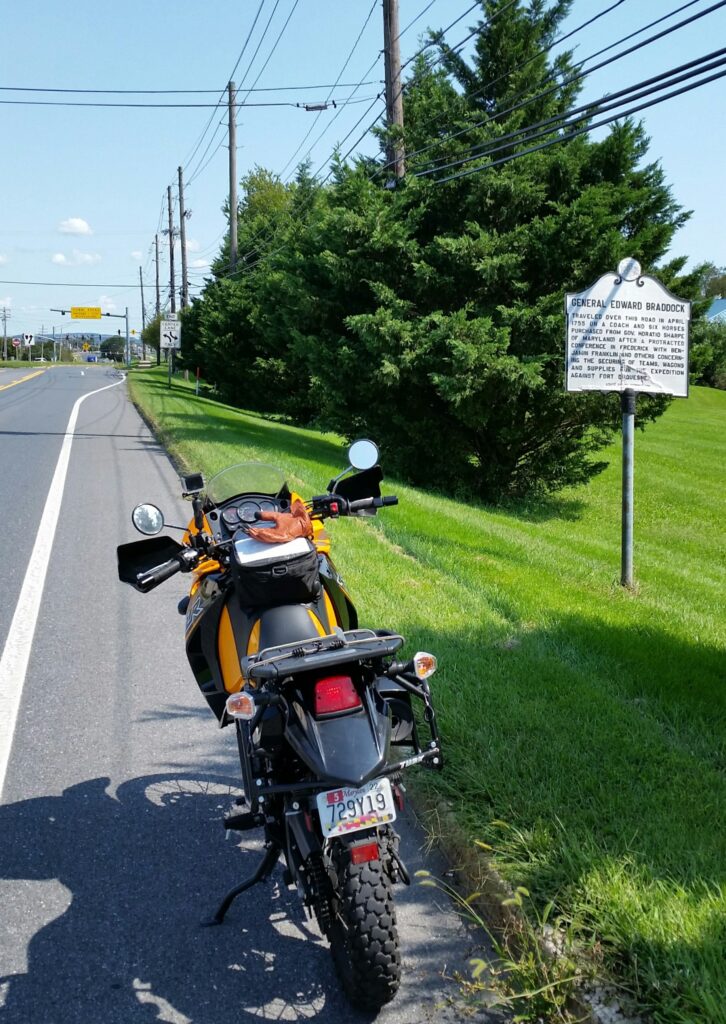
As you leave Frederick and crest Catoctin Mountain in Braddock Heights (named after guess who), another boulder placed by the Daughters of the American Revolution apprises you of Braddock and Washington’s passage. Now this is maybe a mile west of Hagan’s Tavern, which we met in “Filling in the Gaps”. Now the tavern wasn’t there, but maybe that old tree witnessed Braddock and Washington passing by.
By the way, this is the third location for this boulder. It originally was next to Braddock Spring, where allegedly Washington and Braddock quenched their thirst. Then it was moved due to road building, but ended up behind a guard rail, not very far from the tavern. Finally it was moved to this spot.
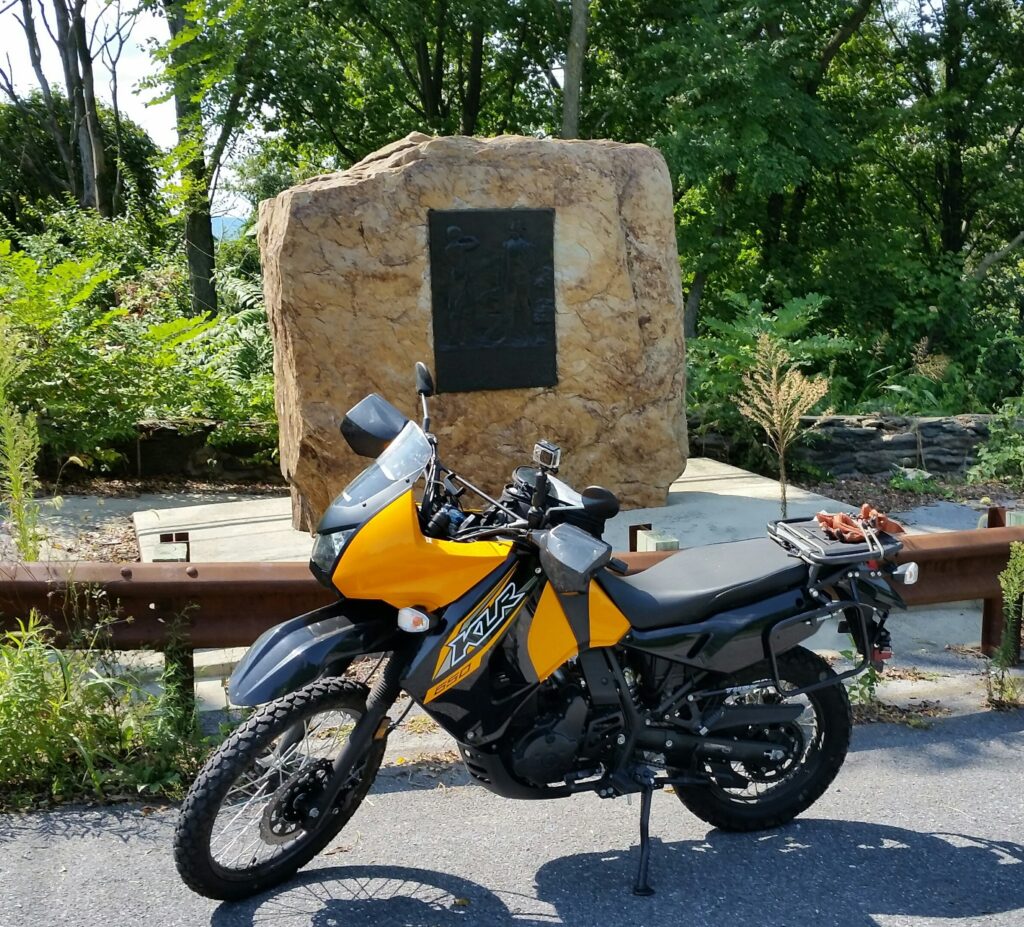
First Braddock’s troops led by Dunbar, and later Braddock, himself, riding in his six horse carriage, followed what was to become the Old National Pike toward South Mountain. They veered a bit to the south and crossed at Foxes Gap. Probably at the time easier to haul the cannon over. You remember Foxes Gap, where a century later the confederate dead were to be piled into a dry well.
Crossing the Potomac
After crossing South Mountain their paths diverged. Dunbar and the troops and the artillery travelled a more northerly route to cross the Potomac at what is now Williamsport, while Braddock, along with Washington crossed at what is now Shepherdstown.
Great Wagon Road
Dunbar and the troops forded Little Antietam and Antietam Creeks, where today we find the one lane Upper Bridge route that Hooker and Mansfield followed a little over a hundred years later.
The northerly route joined the Great Wagon Road that used Watkins Ferry to traverse the Potomac. The Great Wagon Road stretched from Philadelphia, across southern Pennsylvania (think US Route 30), turned south after Gettysburg and travelled up the Shenandoah Valley (remember the Shenandoah flows north, and think I-81) and into the interior south. Settlers travelled this road by the thousands. So it would be the logical choice if you were hauling heavy artillery.
KiLleR Bee traverses a one lane bridge across the C & O Canal to a boat ramp near the bridge carrying US 11. Watkins Ferry ported Great Wagon Road travelers across the Potomac in this area.
A road sign just across the US 11 bridge in West Virginia remembers Watkins Ferry.
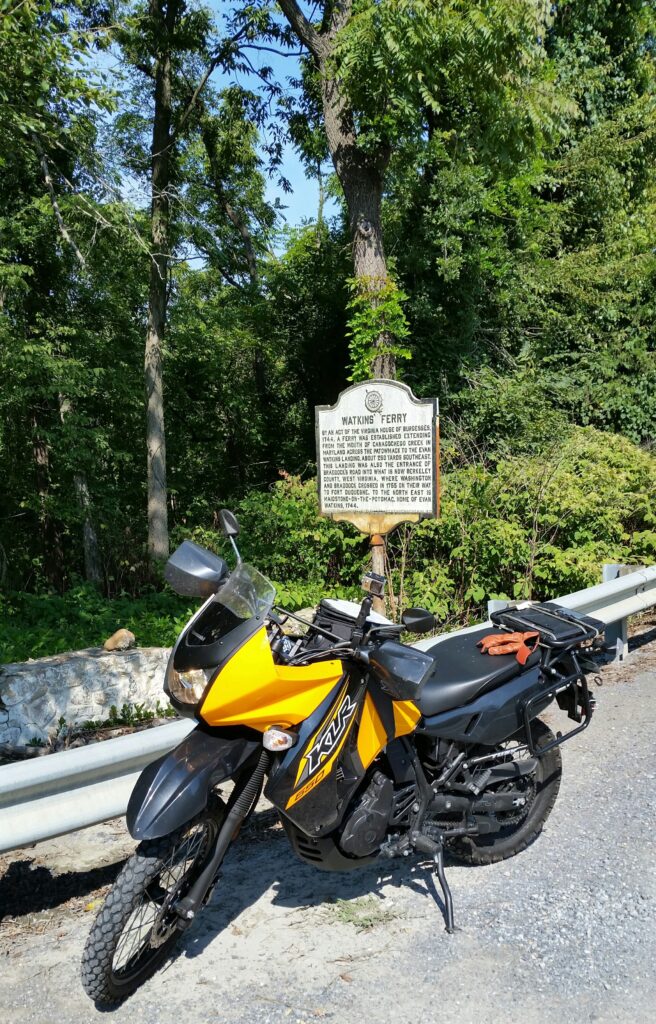
Sharpsburg
Meanwhile, Braddock, traveling much lighter, took a short cut through Sharpsburg (think MD 34), fording Antietam Creek around the Middle Bridge area. They may have used Swearingens Ferry to cross the Potomac at Shepherdstown.
KiLleR Bee finds a Braddock road sign in Sharpsburg.
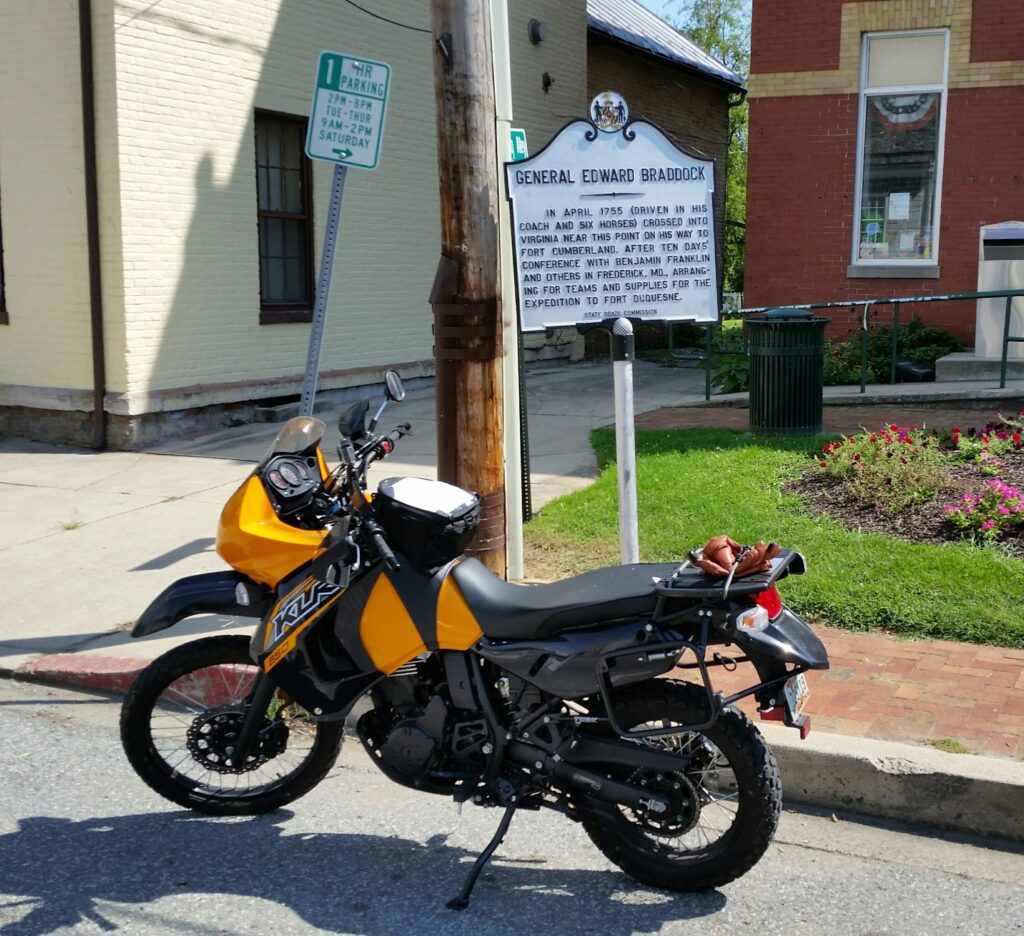
Shepherdstown
KiLleR Bee is parked in front of two historical markers commemorating ferries that crossed the Potomac into Shepherdstown. Swearingen started his ferry service in 1755 so may have been available to Braddock. As you look down the road you can see the Bavarian Inn, just across the river in Shepherdstown, WV.
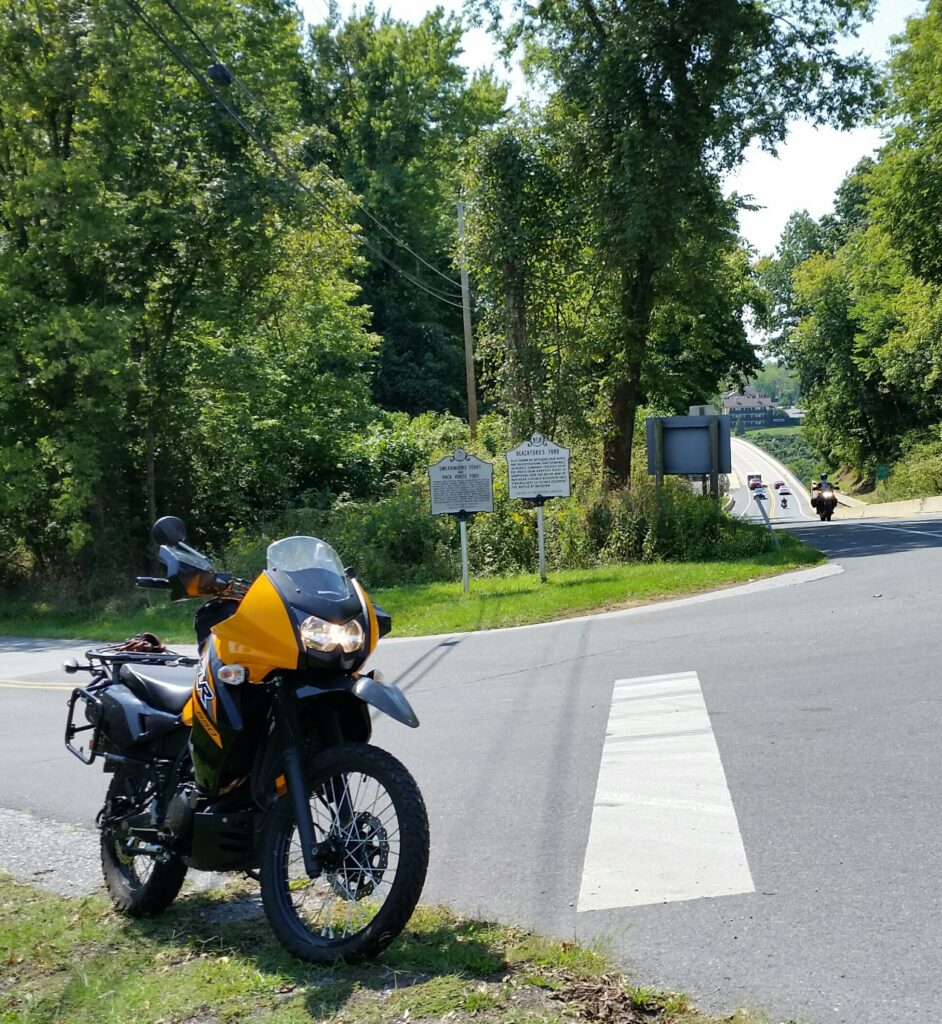
Let’s take a ride into West Virginia.
Both crossings of the Potomac will bring you to the Great Wagon Road and on into Winchester, where Braddock would regroup and march to Fort Cumberland.
Reading note: I found Crocker’s “Braddock’s March” to be an overall helpful historical account of the March. Baker’s “Braddock’s Road” focuses on an almost mile by mile examination of the route of Braddock’s Road in today’s landscape. Essential for riding history.